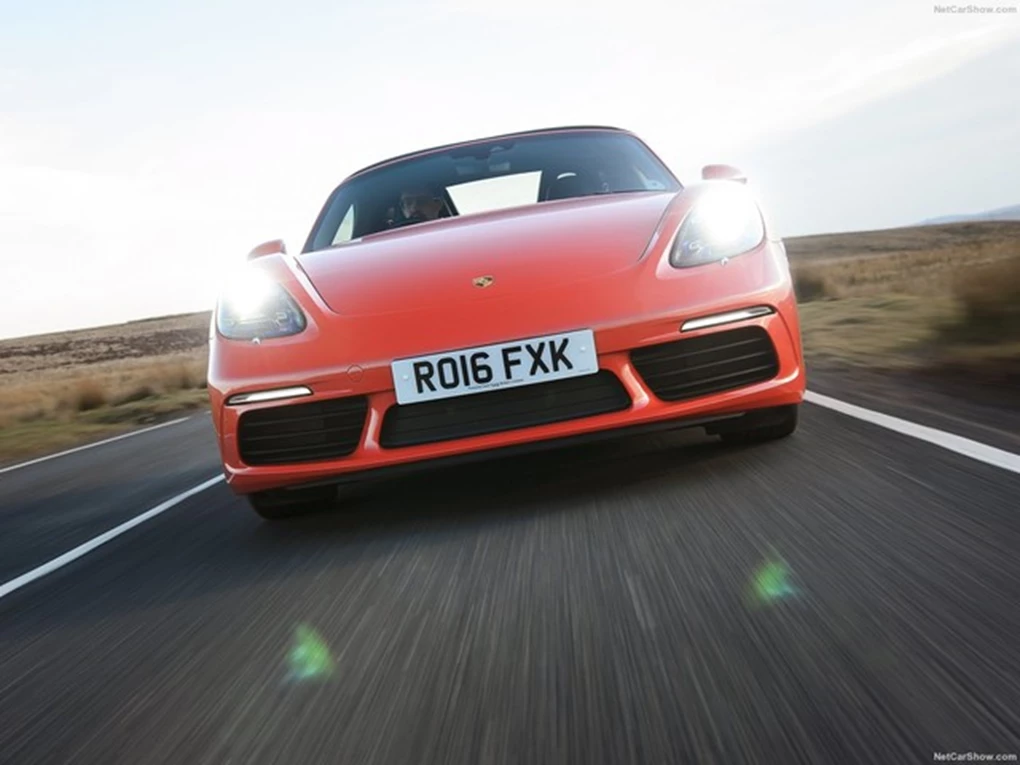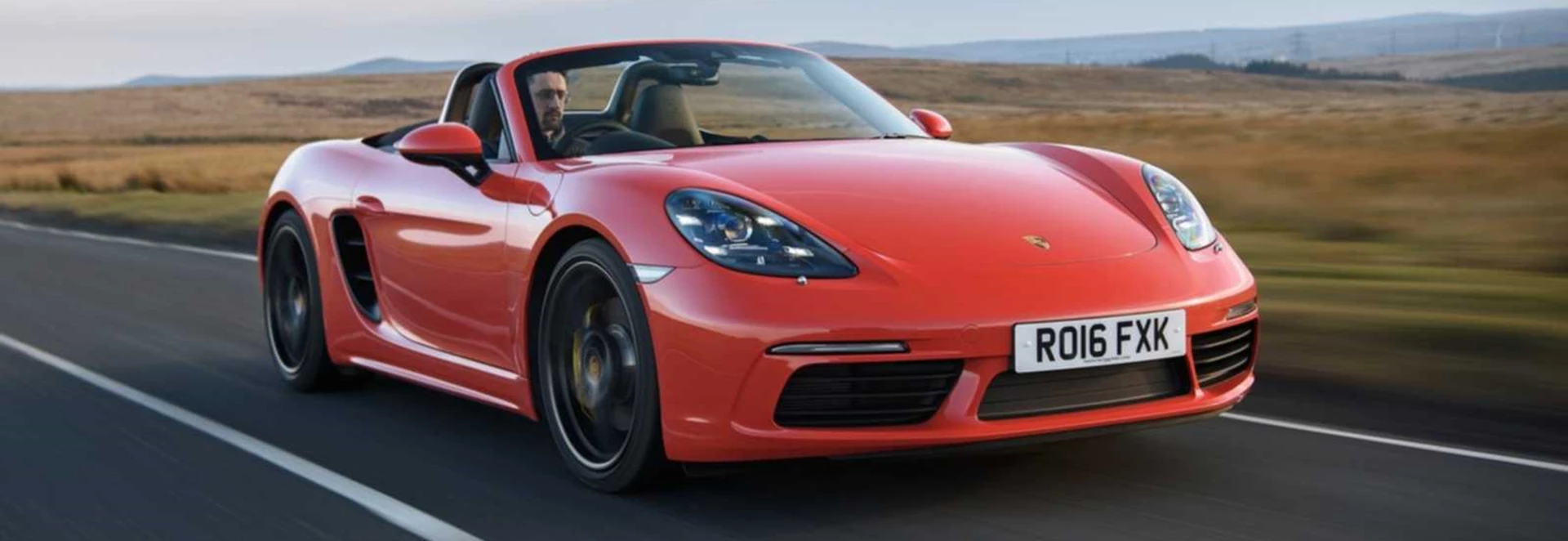The Porsche Boxster is famous for being one of the world’s best-handling convertibles, with a mid-engine design, low centre of gravity and sublime chassis, resulting in eye-watering cornering. While this has been the case ever since its launch in 1996, Porsche is a “let’s make things even better” kind of company. Just look at the Porsche 911.
For 2016, Porsche has even changed the Boxster’s name, introducing the number 718 to pay homage to the petite four-cylinder Porsche racing car which was so successful way back in the late 1950s. In fact, everything but the roof, windscreen and boot is new, with the biggest – and most terrifying change for Porsche fans – being the 2.5-litre, four-cylinder and turbocharged engine. It’s more efficient, it’s more powerful, but is it any good?
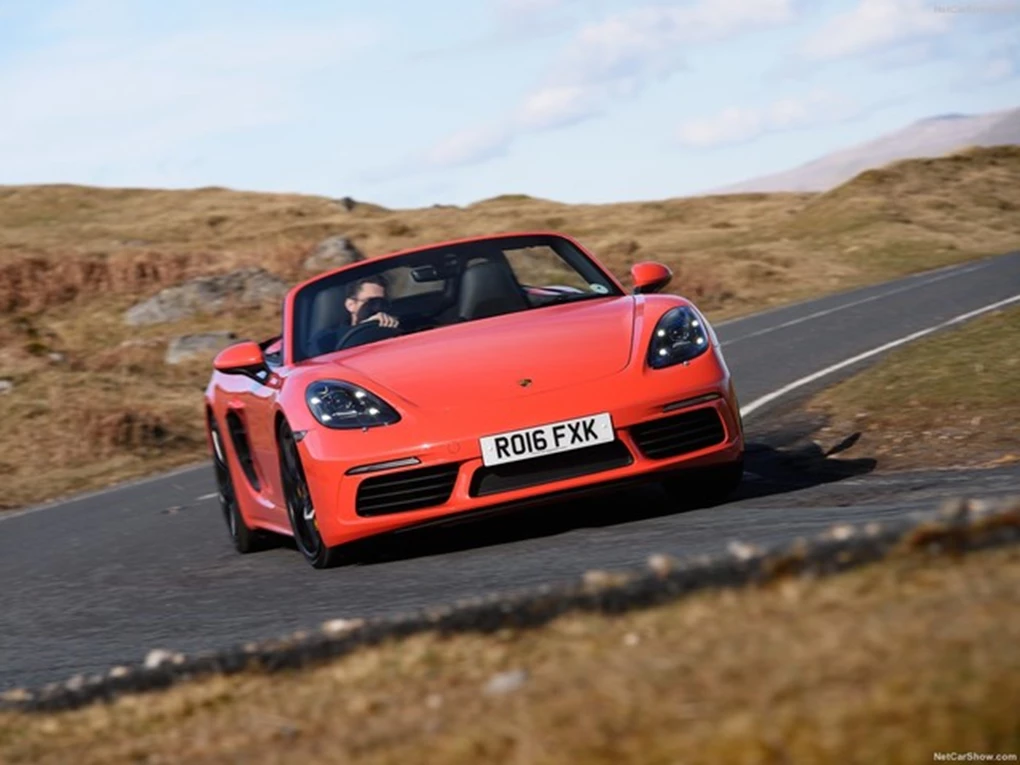
Performance
Downsizing always looks great on paper. You get a smaller engine, squeeze more air into it with a turbocharger to make it more efficient, add trickery like direct fuel injection and stop and start and bask in the extra economy and extra power. But, there are hurdles, because on-paper performance and driver feel aren’t always the same. Cars with turbochargers might make lots of power, but they can also be recalcitrant at low revs, with lag making them a pain to drive.
Luckily for us, Porsche engineers are amongst the hardest to please and to that end they’ve fitted the first turbo with variable turbine geometry to a petrol engine (bar the 911 Turbo) anywhere in the world. This alters its profile at low revs, so peak torque arrives at just 1,900rpm and keeps hitting until 4,500rpm. The six-speed manual we drove felt hugely quick, the rear haunches squatting each time we squeezed the throttle. The PDK automatic is even faster, because it’s also the first car which maintains turbo boost during upshifts. In the manual 0-62mph takes 4.6 seconds, while the auto smashes it in just 4.2 seconds.
And the noise? Well, it’s certainly not a bad sound, with a rumble at low revs and guttural roar in the mid-range which many have likened to the flat-four engine found in the rally-bred Subaru WRX STI. If you are fresh to the Boxster, you’ll love it. But, if you’ve owned a six-cylinder Boxster before, you may well miss its smooth, sonorous howl.
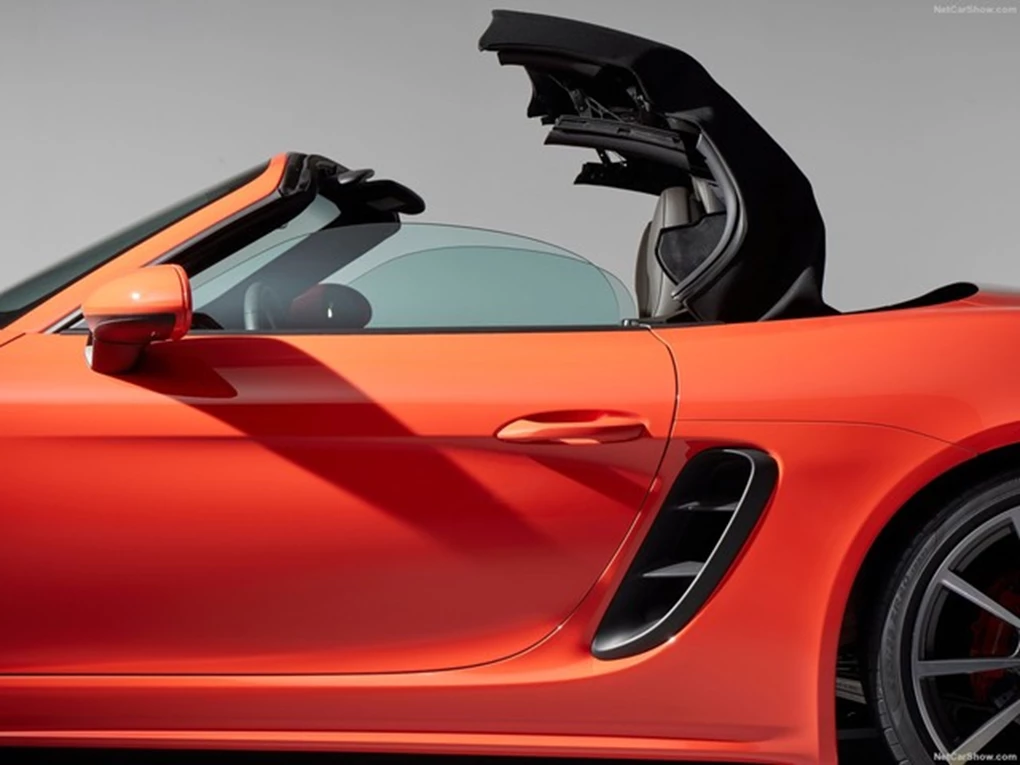
Ride and Handling
This is a car you almost think through corners, picking a line and hitting it with delicacy
Breathe a sigh of relief, because here there’s far less controversy. The chassis is even better than we remember from the previous Boxster, which was easily one of the most fun cars on sale. With the mass of the engine in the middle of the car, the nose feels light and this fact, coupled with direct steering, means the Boxster never feels like it’s going to understeer wide of the apex. There are improvements over the older Boxster too, with the faster steering borrowed from the Porsche 911 Turbo and improvements to the rear suspension setup. As an option you can specify Porsche Active Suspension Management (PASM), with a 10mm lower ride height, or PASM Sport Chassis with a 20mm lower ride. Both offer different settings to stiffen or soften the dampers for cruising or heading out on track. This is a car you almost think through corners, picking a line and hitting it with delicacy, thanks to its exquisite grip and agility. Of course, the extra grunt of the new engine also means you can adjust the car mid-corner with the throttle and even push the rear wheels into oversteer, but you’d really need to be on a track to explore these traits. And that’s partly because the Boxster S in 718 guise is a seriously quick car. The Boxster has never been an out and out bruiser, but with a top speed of 177mph it can cover ground faster than ever before.
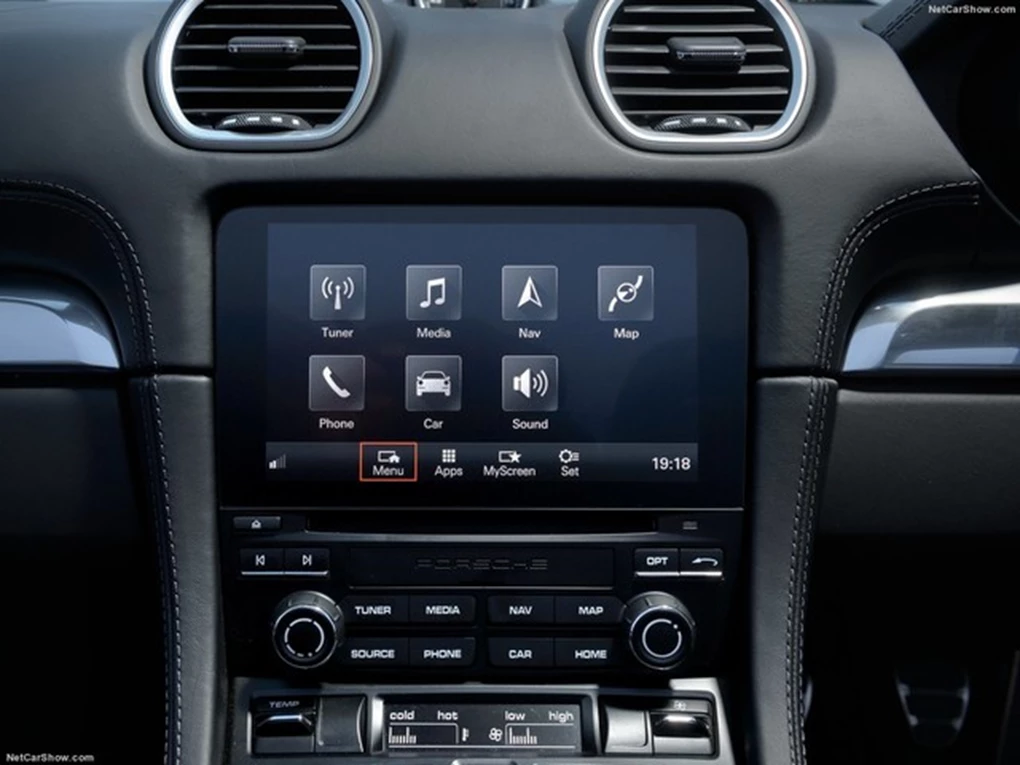
Interior and Equipment
You can tell a Boxster from a Boxster S, because while the former has a single, centrally-mounted exhaust, the S has twin tailpipes.
The biggest news inside is a new infotainment system, which now features a responsive touch-screen and improved smartphone connectivity. Sat-nav is still an option, but it’s almost more intuitive and directions can be displayed in the instrument cluster, making it easier to follow directions at a glance. Fit and finish of materials in the cabin is excellent, so while it’s undoubtedly a snug place to be, the Boxster is also a very nice place to sit. Everything from the air vents to the dashboard feels well-constructed and built to last, while the seats and steering wheel are ideally placed and befitting of a sports car. The electric roof is speedy to operate, opening and closing in around ten seconds, while being able to complete both while driving at around the speed limit in town is particularly handy with fickle British weather. With a mid-engine layout, the Boxster gets two luggage spaces, one under the bonnet (150 litres) and another at the rear of the car with 125 litres of space. This actually makes the Boxster fairly practical, so long as you are able to split your luggage into smaller bags. There’s not much space inside the cabin, but you do get a small glovebox and cupholders which pop out of the dashboard.
Cost
The Boxster S has an official economy figure of 38.7mpg
Of course the biggest news here is the economy boost afforded by turbocharging, with 13 per cent increases according to Porsche. The Boxster S has an official economy figure of 38.7mpg with the PDK automatic gearbox fitted and CO2 emissions of 167g/km, climbing to 184g/km if you go for the manual gearbox. With such an excellent reputation, resale values have also been impressive for the Boxster. It will be interesting to see if the new engine affects this at all, but we’d be surprised if it has a large effect.
Our Verdict
As the Boxster continues to evolve, and even gets a new name, it simply gets faster and faster. For such a focussed sports car, it’s also impressively easy to live with, with a comfortable interior and the latest tech. Does the engine have the same character as the old six-cylinder? Not quite. But, its gains in performance and economy are impossible to deny.
